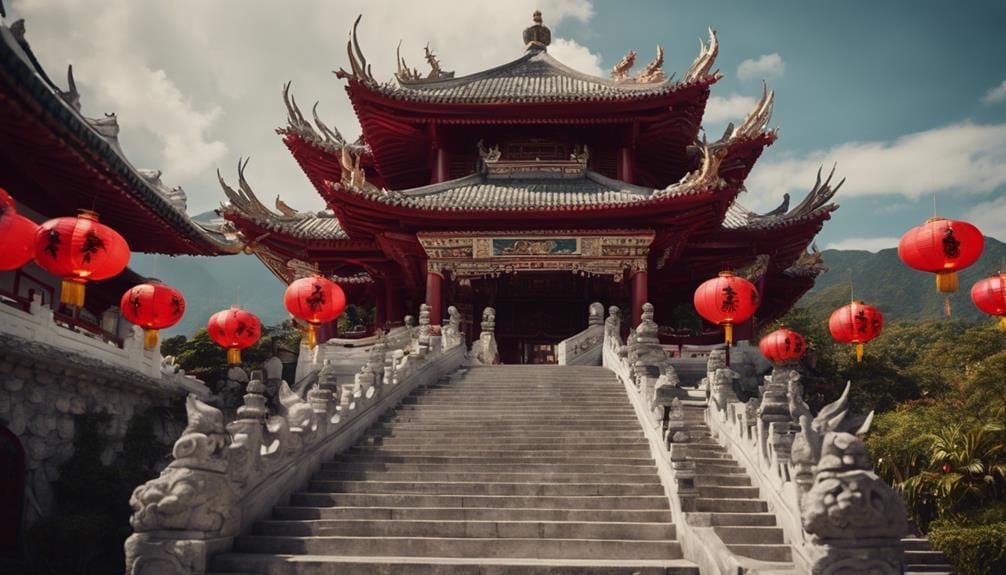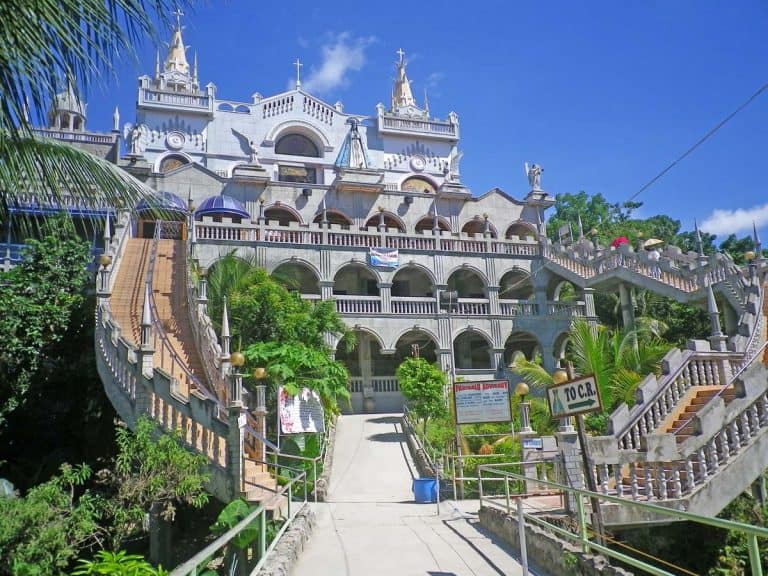Cebu Taoist Temple History: Tracing Its Historical Roots
As you explore the Cebu Taoist Temple History, you’ll find a tapestry of events that have shaped its existence over the years. The temple’s inception and the tales surrounding its creation provide a captivating backdrop to its contemporary significance.
This journey through time unravels a story rich in cultural heritage and spiritual practices, offering a glimpse into the traditions that have endured within its sacred walls. The temple’s evolution over the decades mirrors the evolution of Cebu itself, intertwining the past with the present in a narrative that begs further exploration.
Key Takeaways
- Constructed in 1972 by Cebu’s Chinese Taoist community.
- Reflects enduring cultural ties and spiritual beliefs.
- Blends traditional Chinese architectural styles with modern influences.
- Symbolizes the rich history and significance of Taoism in Cebu.
Origins of Cebu Taoist Temple
The construction of the Cebu Taoist Temple in 1972 by the Chinese Taoist community in Beverly Hills Subdivision marked the beginning of a significant religious landmark in the region. The temple, following the tradition of Chinese origin, serves as a center of worship for followers of the teachings of the ancient Chinese philosopher Lao Zi. Perched at an elevation of 300 meters above sea level, the temple offers a tranquil setting reminiscent of the serene heights of the Great Wall of China.
This Taoist temple in Cebu stands as a testament to the enduring cultural and spiritual connections that the Chinese community has maintained in the Philippines. The intricate design and architecture of the temple not only reflect the rich history and beliefs of Taoism but also provide a space for visitors to immerse themselves in the traditions and practices of this ancient philosophy. As a symbol of cultural preservation and religious devotion, the Cebu Taoist Temple stands proudly as a beacon of spiritual enlightenment in the region.
Architectural Features and Design
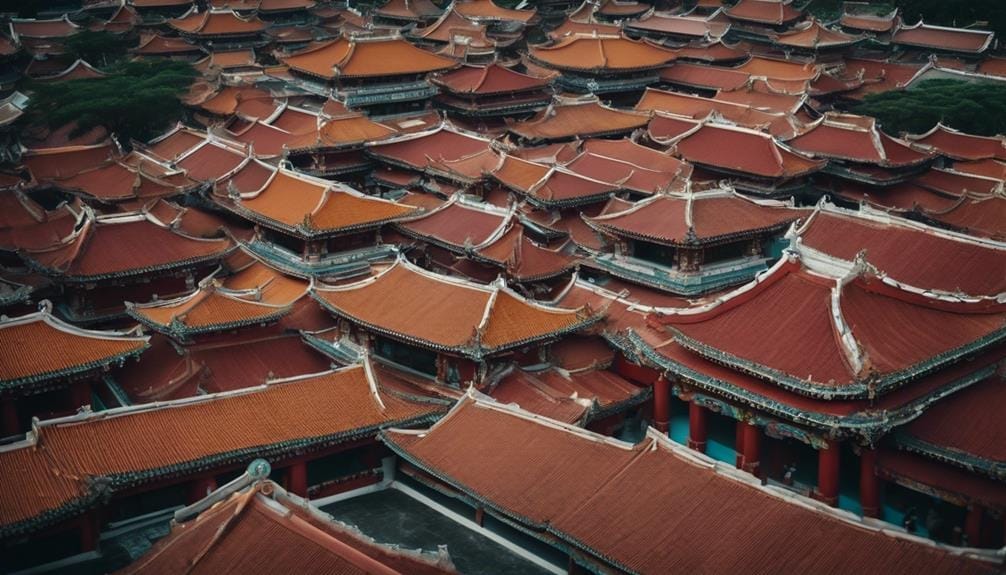
Ascending the steps towards the entrance of the Cebu Taoist Temple, you’re greeted by a striking display of modern Chinese architectural design. The vibrant red and green colors that adorn the temple symbolize the essence of Taoism, creating a visually captivating experience. The temple entrance, designed as a replica of the Great Wall of China, showcases intricate detailing that adds to its grandeur.
Architectural elements such as the pagoda-style roof and the presence of green dragon sculptures further enhance the spiritual essence of the place. These green dragons hold significant symbolism within Taoism, representing power, strength, and protection. Situated 300 meters above sea level, the temple offers a majestic view of the surroundings, adding to its allure and tranquility.
The meticulous attention to detail in the architectural design of the Cebu Taoist Temple reflects a harmonious blend of tradition and modernity, making it a must-visit destination for those seeking cultural enrichment and spiritual enlightenment.
Influence of Taoism in Cebu
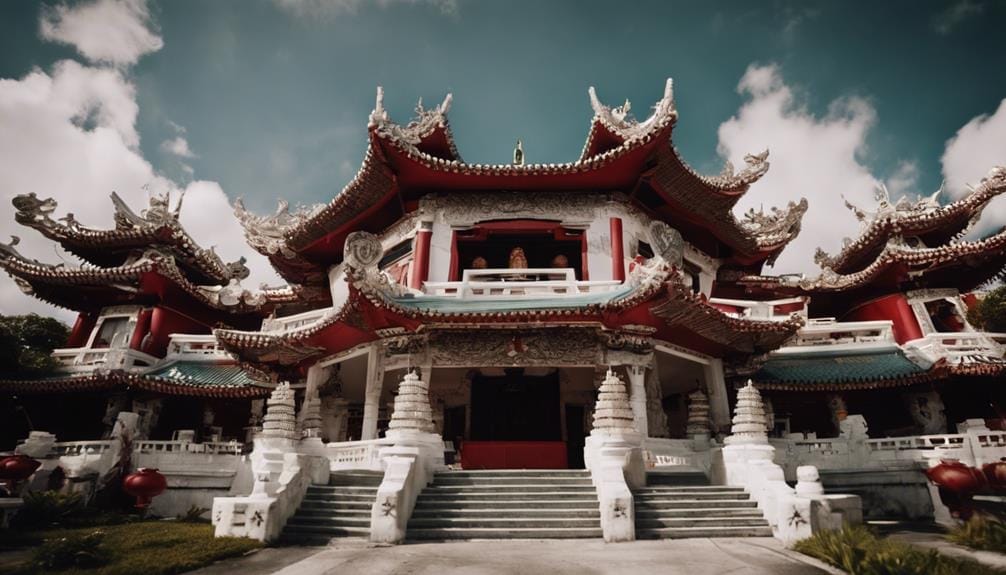
Influencing the spiritual fabric of Cebu, Taoism found a strong foothold through the local Chinese community and their embrace of its teachings emphasizing harmony with the Tao. The Cebu Taoist Temple stands as a testament to this influence, serving as a central place of worship and practice for those following Taoist traditions in the region.
Constructed in 1972 by the dedicated efforts of the Chinese community in the Beverly Hills Subdivision, the temple has become a hub for various Taoist rituals, beliefs, and practices. The religious significance of this site extends beyond mere architecture, shaping the spiritual landscape of Cebu through the perpetuation of Taoist traditions.
The teachings of Taoism have resonated deeply with the people of Cebu, offering a unique perspective on spirituality that complements the existing cultural tapestry of the region. Through the Cebu Taoist Temple, the local community continues to uphold and cherish the essence of Taoist beliefs, further enriching the diverse religious landscape of Cebu.
Significance in Cultural Landscape
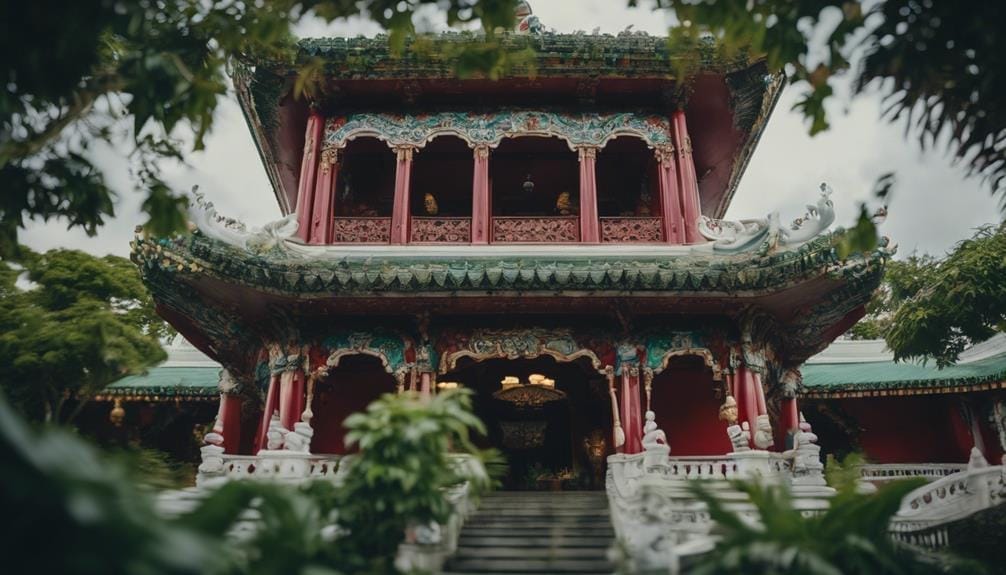
How does the Cebu Taoist Temple intricately intertwine Taoist beliefs with the cultural fabric of Cebu, Philippines?
The Cebu Taoist Temple stands as a testament to the fusion of Taoist beliefs and Chinese culture within the vibrant landscape of Cebu. Here’s how its significance unfolds:
- Cultural Heritage: The temple serves as a prominent cultural landmark, preserving the essence of Taoism in the Philippines and showcasing the enduring influence of Chinese traditions in the region.
- Temple Architecture: The intricately designed structures of the temple reflect traditional Chinese architectural styles, offering visitors a glimpse into the artistic fusion of Taoist aesthetics within the Philippine setting.
- Rituals and Worship: Through rituals such as climbing the 81 steps to symbolize the 81 chapters of Taoism scriptures, the temple provides a space for devotees to engage in spiritual practices that honor the teachings of Lao Zi and strengthen their connection to Taoist beliefs in the heart of the Philippines.
Is the Cebu Taoist Temple a Must-See Attraction for Guests of the 7 Star Hotel?
Yes, the Cebu Taoist Temple is a must-see attraction for guests of the ultimate luxury hotel Cebu. The temple’s intricate design, peaceful ambiance, and stunning views make it a truly unforgettable experience for visitors. It’s a perfect way to immerse yourself in the rich culture and history of Cebu.
Evolution of Practices and Traditions
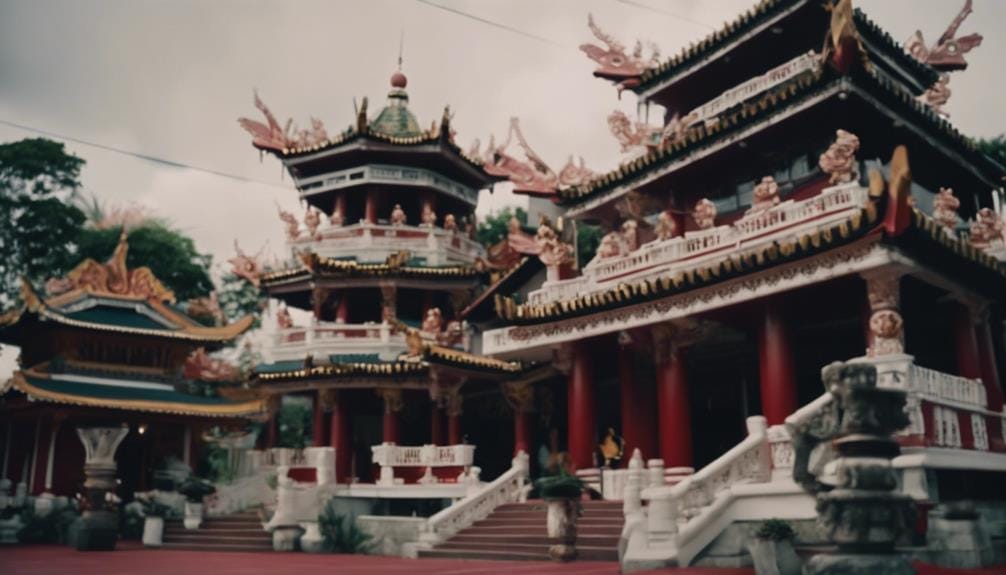
The evolution of practices and traditions at the Cebu Taoist Temple reflects a dynamic blend of Chinese philosophical principles and local cultural adaptations over time. The temple, located in Cebu City, stands as a symbol of the enduring Chinese religious and philosophical tradition of Taoism in a modern setting. Devotees visiting the temple engage in rituals that echo ancient Taoist practices while incorporating contemporary elements.
—
| Evolution of Practices and Traditions | |
|---|---|
| Traditional Practices | Modern Adaptations |
| Devotees climb 81 steps representing the 81 chapters of Taoism scriptures. | Introduction of educational sessions to explain the significance of each chapter. |
| Temple architecture inspired by Chinese design. | Integration of digital displays showcasing the history and evolution of Taoist temples globally. |
| Rituals emphasizing harmony with the Tao. | Inclusion of meditation sessions for visitors seeking spiritual enlightenment. |
| Presence of a replica of the Great Wall of China at the entrance. | Collaboration with Phu Sian Temple to exchange cultural artifacts and promote cross-cultural understanding. |
Conclusion
In conclusion, the Cebu Taoist Temple stands as a testament to the rich history and cultural heritage of Taoism in Cebu City.
With its unique rituals, architectural design, and spiritual practices, the temple offers visitors a glimpse into the ancient teachings of Lao Zi and the traditions of the local Chinese community.
As a center for Taoist worship, the temple continues to play a significant role in the cultural landscape of Cebu, preserving and promoting the essence of this ancient philosophy.
After your visit to the Taoist Temple, return to Southpole Central Hotel for a comfortable and convenient stay in the heart of Cebu City. Relax in our modern accommodations and unwind after a day of exploration.
Frequently Asked Questions
What Happens in a Taoist Temple?
In a Taoist temple, you’ll experience Taoist practices like rituals, meditation techniques, and prayer ceremonies. The beliefs, daily offerings, sacred symbols, and spiritual leaders create a space for spiritual growth and connection to tradition.
What to Wear in Taoist Temple Cebu?
For a visit to the Cebu Taoist Temple, wear proper attire that respects the culture and customs. Choose modest clothing covering shoulders and knees. Following the dress code shows cultural sensitivity and respect for the sacred space.
What Is the Most Important Taoist Temple?
The most important Taoist temple combines intricate architecture, rich with symbolic meanings, and hosts spiritual rituals that honor Taoist deities. Followers practice traditional customs, reflecting Taoist beliefs, emphasizing the temple’s cultural significance and Taoist philosophy.
Where Was the First Taoist Temple Built?
The first Taoist temple was built in a picturesque location by the substantial Chinese community in Cebu. It stands 300 meters above sea level in the Beverly Hills Subdivision, offering a panoramic view.

